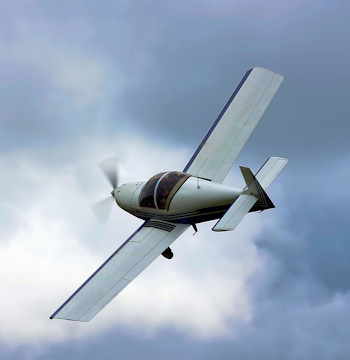Subscriber question:
"I'm a VFR pilot. What do I do if I accidently fly into a cloud?" - Scott W.
Wally:
 “We all know that inadvertent IMC is the cause of many fatal accidents in general aviation. But, you should know that you have been given the tools to avoid such an outcome. So, the first step (if entering IMC) is to not do anything fast. Which, by the way, is the natural reaction. You know you are in a bad spot and you want to get out of there as fast as possible. But, you also know that is the wrong reaction.
“We all know that inadvertent IMC is the cause of many fatal accidents in general aviation. But, you should know that you have been given the tools to avoid such an outcome. So, the first step (if entering IMC) is to not do anything fast. Which, by the way, is the natural reaction. You know you are in a bad spot and you want to get out of there as fast as possible. But, you also know that is the wrong reaction.
I often read stories about a pilot flying in marginal weather and they state that the weather suddenly closed in around them. Well, that may be the way it looks from the cockpit, but the fact is in most cases the pilot flew into the weather.
Since the weather rarely moves faster than 30 knots it is very unlikely that it will somehow catch us and surround us. So, if we were flying in VFR weather and suddenly it becomes IFR, in many cases all we need to do to get out of it is to make a standard rate 180 degree turn. As a properly trained pilot, you know how to do that.
All private pilots are required to have at least 3 hours of basic instrument training and be able to demonstrate basic instrument proficiency on the private pilot flight test. Even student pilots are required to receive basic instrument training prior to solo cross country.
During your training, your instructor should have emphasized that when on instruments one never banks steeper than that required to make a standard rate turn. Recall that the angle of bank to make a standard rate turn is based upon the true airspeed. So, airplanes like a Cessna 172 or Piper Warrior only need approximately a 15 to 20 degree bank to accomplish a standard rate turn.
Here is where our accident pilots go wrong. In an effort to get out of the IFR conditions quickly, they roll into a steeper bank than needed, often beyond 30 degrees. Recall what happens when we roll into a steep bank, the nose drops. When the pilot notices the altitude decreasing, they pull back on the yoke which causes the bank to steepen further and the nose to drop more. Quickly the aircraft is in a pilot induced spiral that often ends in disaster.
So in the event that you inadvertently enter IFR conditions, take a deep breath and roll into a shallow turn, approximately 15 to 20 degrees of bank and complete approximately a 180 degree turn. Yes, it will take 60 seconds to complete the turn and it will seem like the longest 60 seconds of your life but KEEP THAT BANK UNDER 20 DEGREES and you will have no trouble holding your altitude. Now roll out and hold that heading. Be patient and you will soon fly back to where you were a few minutes ago. Now it is time to retreat to a safe airport and land.
There is another type of inadvertent IMC and that is a case where one accidently climbs from VFR conditions into the bottom of the clouds. In that situation, all you need to do is maintain wings level, reduce power, lower the nose and begin a descent keeping the wings level.
Naturally these scenarios assume that you have maintained the basic IFR skills that you demonstrated when you completed your private pilot flight test. Remember that IFR skills are not like riding a bicycle. If you don’t use them you will lose them. So if it has been a while since you have been under the hood, get an observer pilot or a CFI and get those skills current. All VFR pilots need to keep their basic IFR skills up to date, it’s a skill that could save your life someday.”
This Air Safety Institute video reinforces the danger of VFR flight into IMC.
Have you ever inadvertently entered IMC (Instrument Meteorological Conditions) while flying VFR?

